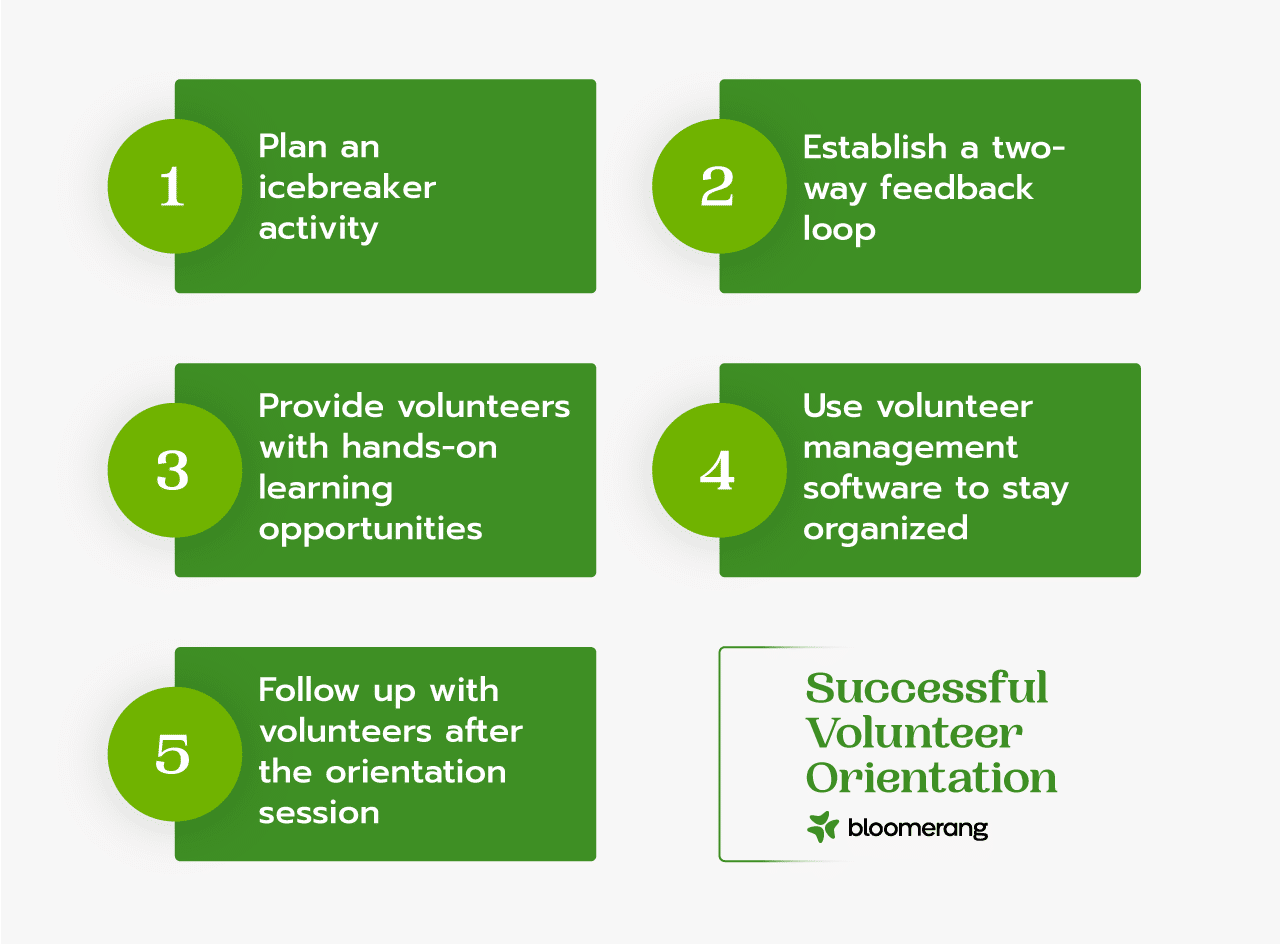How to Host an Effective, Engaging Volunteer Orientation



As a volunteer coordinator, you know the importance of volunteer orientation sessions as they are one of the most critical aspects of the volunteer management process. They offer a dedicated training session for new volunteers to learn more about your organization, pick up valuable new skills or important volunteer information, and mingle with fellow new volunteers.
All types of volunteer programs use training and orientation sessions. For example, humane societies and animal shelters often use volunteer orientation programs to show volunteers around their facilities and teach them any animal care-related skills they may need to know. Other nonprofits may use volunteer orientations to teach volunteers highly specialized skills, such as creating advocacy materials or learning building renovation techniques.
In this guide, we’ll explore the ins and outs of creating an effective volunteer orientation process that makes volunteers excited about participating. We’ll cover:
After you’ve successfully recruited your volunteers, it’s important to give them an engaging, productive volunteer orientation experience that makes them excited about starting their volunteer career. This allows you to start the volunteer relationship off on the right foot and encourage volunteers to stick around with your organization for the long haul. Let’s dive in to learn more!
Once you’ve recruited a passionate group of volunteers for your organization, the next step is to offer a volunteer orientation as a warm welcome. Hosting a new volunteer orientation is the first opportunity any organization has to showcase how special volunteers are to them and is critical in making volunteers feel motivated to begin.
Ask your volunteers to introduce themselves during their volunteer orientation. They can talk about what they’re passionate about, their strengths, and previous experiences. Hosting a volunteer orientation allows volunteers to get to know one another and become comfortable with each other from the get-go.
Here are some of the benefits of holding volunteer orientation sessions:
Remember, some volunteers may not feel comfortable having an orientation in person due to the ongoing COVID-19 pandemic. But volunteer orientations can also be held virtually through video calls at a time that’s convenient for everyone!
It’s crucial to think about what you want to cover in your volunteer orientation ahead of time, while also leaving some room for questions. Create a checklist of everything you want to talk about to ensure you don’t forget anything. You can also create a mini checklist for your volunteers if you require them to come in with certain items, such as their volunteer t-shirt or certain supplies.
Each organization will have its own specific topics to cover, but we’ve compiled a list of general topics that you’ll likely want to explore in your volunteer orientation.

Your orientation will set the foundation for a successful long-term relationship with your new volunteers. You want to make your volunteers feel welcomed when they come on board and empower them with the information they need to get a clear understanding of your organization and their roles. Your volunteer orientation should include the following items:
It’s vital to have a system in place for welcoming your volunteers, and it can become overwhelming as there are many moving parts to consider. Here, we have outlined what to take into consideration while planning your orientation to help you out. If you’re ready to start planning, here are the steps you need to follow to get started:
Staying organized will help you stay on track and make sure you don’t leave any important steps out. Remember to start planning ahead of time, so there’s room for any adjustments before the day of your orientation.
Since your volunteers are the pillars of your nonprofit’s success, you want to create an effective orientation program to get them warmed up and excited. However, throughout the volunteer orientation process, you may face obstacles or challenges since it’s no easy feat. Use these best practices to stay on track and face any challenges with ease:

The goal is to foster a passionate and prepared volunteer base. Your orientation session is the beginning of introducing new volunteers to your robust volunteer program, which is why it requires careful planning. Once your orientation concludes, it’s just as important to maintain your communication with your new volunteers.
Now that you’ve learned the benefits of your volunteer orientation, what you need in order to be successful, and the best practices to help you stay organized, it’s time to start planning!
You can take advantage of technology tools such as a volunteer management software that can help you stay in touch with your new volunteers and schedule new volunteers for shifts.
Remember to ask for feedback from your volunteers as it helps you measure the success of your orientation. Good luck!

Comments